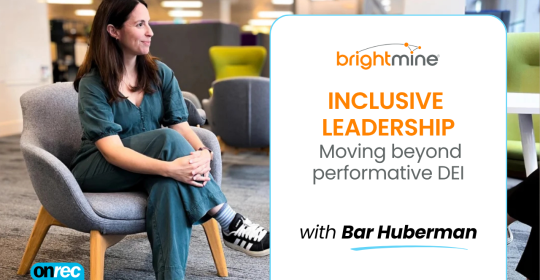In recent years, developments in machine learning have enabled core technologies, such as the CRM and ATS (Applicant tracking system), to refine the process of better screening of applicants to identify those with the most likelihood of progression through the hiring funnel through to hire, based on machine learnt persona. Personas are the templates of profiles most likely to progress through the hiring funnel, used for targeting through smart communications and selection. These tend to be built by algorithms.
Of course these aren’t always perfect. Reports suggest that an algorithm that was being tested as a recruitment tool by online giant Amazon was sexist and had to be scrapped. Whilst unconfirmed, this news raises a number of questions about how artificial intelligence or machine learning should be applied to talent acquisition in a way that will not pick up the unconscious bias of humans.
Top employers continue to receive huge numbers of applications for each open position and ultimately, the majority of applicants – upwards of 95 percent – are turned down. With AI, employers should have an even greater ability to quickly flag candidates that have certain key indicators of success to streamline the selection process and nurture this talent ahead of competitors.
It is important though that a tool never does this based on historical data alone. Efforts must be made to constantly improve the robustness of any tool to help leading employers benefit from the best possible early evaluation of applicants based on responses given within online application forms. This can be achieved by collecting enormous amounts of structured and unstructured data, processes that data using the best from thousands of machine-learning algorithms to most accurately predict outcomes, and refines that process as it learns.
Constant machine learning will work to reduce unconscious biases and enhance diversity by uncovering strong candidates who may have gone unnoticed in a non-intelligent or manual process. In turn, recruiters gain insight and reasoning into which characteristics score the strongest.
Oleeo commissioned the Department of Computer Science at University College London to look into how algorithms can ensure that they do not inadvertently fall into gender bias, as Amazon appears to have done.
It revealed that removing any wording or phrases that could unconsciously predict the gender of a candidate would enable algorithms to make any gender prediction to be no better than random with no direct impact from the loss of information in the transformation and de-biasing steps.
In fact, more consistent disparate impact scores of close to 1.0 (i.e. no disparate impact observed) are recorded in hiring predictions undertaken in this way providing better hired prediction performance. It is also shown to have consistent negligible disparate impact across a range of hiring values, providing room for adjustment in recruitment screening thresholds without increasing disparate impact.
Working in this way allows employers to foster diversity and accelerate candidate selection, promising no adverse selection in compliance with established selection rate guidelines around the four-fifths guidelines. Customised algorithms can elegantly handle high-volume automation and deliver at-a-glance qualified, quality candidate recommendations critical to recruiting success in large-scale hiring events.
Increasingly, companies want to do the right thing when it comes to fostering diversity from the start of the recruiting process. In terms of compliance, however, we’ve seen companies don’t have standard processes in place to ensure they are meeting set standards. Correctly tuned algorithms can help companies shift from being reactive to proactive in balancing the need to accurately and quickly identify high-quality candidates while simultaneously ensuring compliance.
This can lead to a greater democratisation of recruitment by:
- Recommending candidates who unequivocally perform better: delivering more sales, staying longer
- Better record keeping / reproducible decision making
- Removing the economic bias to exclude
- Enabling employers to better understand what drives performance
- Moving away from the familiar “tried & tested” and so on…
The automated cycle of recruitment means you should have a better talent pool of candidates coming through that reflect the future leaders you want joining your organisation. Clever data techniques will recommend candidates who unequivocally perform better and thereby deliver more revenue, profit, or stay longer in the business. It means that a business can go on to use algorithms based on how employees perform in the business rather than what line managers decide at interview.
In so doing, it is feasible that technology could effectively free up 66 months of recruiter resource each year – time which could be spent on adapting better engagement techniques to ensure a leading candidate with many offers at their disposal is more likely to buy into the culture, mission and vision of our clients ahead of market competitors with equally tempting offers on the table. In the recruitment game, closing down top talent ahead of competition is a big challenge and this technology is helping to offer a solution to this and reduce decline rates to suit corporate objectives.







